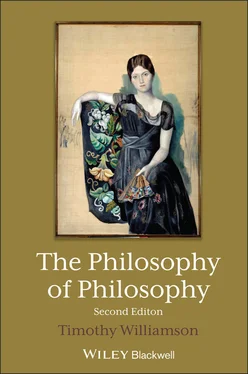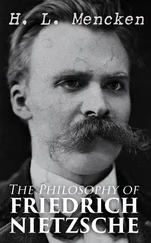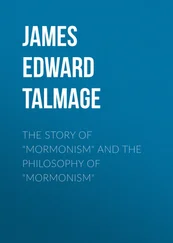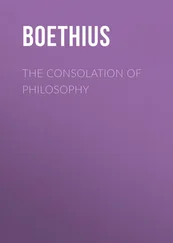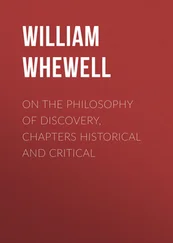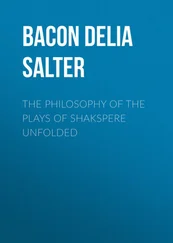On closer inspection, this strategy looks less promising. For a paradigm borderline case is the worst case for the law of excluded middle (for a term such as ‘dry’ for which threats to the law other than from vagueness are irrelevant), in the sense that both proponents and opponents of the law can agree that it holds in a paradigm borderline case only if it holds universally. In symbols, if Mars was a paradigm borderline case at time τ: (Dry(m,τ) ∕ ¬Dry(m,τ)) → ∀ t Dry(m, t) ∕ ¬Dry(m, t))(“If Mars was either dry or not dry at time τ, then Mars was always either dry or not dry”). But on this approach the law does not hold always hold in these cases (¬∀t (Dry(m,t)∕ ¬Dry(m, t)), “Mars was not always either dry or not dry”), from which intuitionistic logic allows us to deduce that it does not hold in the paradigm borderline case (¬ (Dry(m,τ) ∕ ¬Dry(m,τ)), “Mars was not either dry or not dry at”), which is a denial of a particular instance of the law, and therefore intuitionistically inconsistent (it entails ¬Dry(m,τ) & ¬¬Dry(m,τ), “Mars was both not dry and not not dry at τ”). Thus the intuitionistic denial of the universal generalization of excluded middle for a vague predicate forces one to deny that it has such paradigm borderline cases. The latter denial is hard to reconcile with experience: after all, the notion of a borderline case is usually explained by examples.
On closer inspection, this strategy looks less promising. For a paradigm borderline case is the worst case for the law of excluded middle (for a term such as ‘dry’ for which threats to the law other than from vagueness are irrelevant), in the sense that both proponents and opponents of the law can agree that it holds in a paradigm borderline case only if it holds universally. In symbols, if Mars was a paradigm borderline case at time τ: (Dry(m,τ) ∕ ¬Dry(m,τ)) → ∀ t Dry(m, t) ∕ ¬Dry(m, t))(“If Mars was either dry or not dry at time τ, then Mars was always either dry or not dry”). But on this approach the law does not hold always hold in these cases (¬∀t (Dry(m,t)∕ ¬Dry(m, t)), “Mars was not always either dry or not dry”), from which intuitionistic logic allows us to deduce that it does not hold in the paradigm borderline case (¬(Dry(m,τ)∕ ¬ Dry(m,τ)), “Mars was not either dry or not dry at τ”), which is a denial of a particular instance of the law, and therefore intuitionistically inconsistent (it entails ¬Dry(m,τ) &¬¬Dry(m,τ), “Mars was both not dry and not not dry at τ”). Thus the intuitionistic denial of the universal generalization of excluded middle for a vague predicate forces one to deny that it has such paradigm borderline cases. The latter denial is hard to reconcile with experience: after all, the notion of a borderline case is usually explained by examples.
The problems for the intuitionistic approach do not end there. One can show that the denial of the conjunction of any finite number of instances of the law of excluded middle is intuitionistically inconsistent. 7The denial of the universal generalization of the law over a finite domain is therefore intuitionistically false too. If time is infi-nitely divisible, the formula ∀t (Dry(m,t) ∕ ¬Dry(m,t))generalizes the law over an infinite domain of moments of time, and its denial is intuitionistically consistent, but the possibility of infinitely divisible time is not crucial to the phenomena of vagueness. We could just as well have asked the original question about a long finite series of moments at one-second intervals; it would have been equally problematic. The classical sorites paradox depends on just such a finite series: a heap of sand consists of only finitely many grains, but when they are carefully removed one by one, we have no idea how to answer the question ‘When did there cease to be a heap?’ To deny that Mars was dry or not dry at each moment in the finite series is intuitionistically inconsistent. Thus intuitionistic logic provides a poor basis for a negative answer to the original question.
Other theorists of vagueness refuse to answer the original question either positively or negatively. They refuse to assert that Mars was always either dry or not dry; they also refuse to assert that it was not always either dry or not dry.
A simple version of this approach classifies vague sentences (relative to contexts) as true (T), false (F) or indefinite (I); borderline sentences are classified as indefinite. The generalized truth-tables of a three-valued logic are used to calculate which of these values to assign to a complex sentence in terms of the values assigned to its constituent sentences. The negation of A, ¬A, is true if Ais false, false if Ais true and indefinite if Ais indefinite:
A conjunction A & B(“A and B”) is true if every conjunct is true; it is false if some conjunct is false; otherwise it is indefinite. A disjunction A∕ B(“Either A or B”) is true if some disjunct is true; it is false if every disjunct is false; otherwise it is indefinite:
| A |
B |
A & B |
A∕ B |
| T |
T |
T |
T |
| T |
I |
I |
T |
| T |
F |
F |
T |
| I |
T |
I |
T |
| I |
I |
I |
I |
| I |
F |
F |
I |
| F |
T |
F |
T |
| F |
I |
F |
I |
| F |
F |
F |
F |
A universal generalization is treated as if it were the conjunction of its instances, one for each member of the domain: it is true if every instance is true, false if some instance is false, and otherwise indefi-nite. An existential generalization is treated as if it were the disjunction of the instances: it is true if some instance is true, false if every instance is false, and otherwise indefinite. The three-valued tables generalize the familiar two-valued ones in the sense that one recovers the latter by deleting all lines with “I.”
Let us apply this three-valued approach to the original question. If Mars is definitely dry or definitely not dry at t (the time denoted by t), then Dry(m, t)is true or false, so the instance of excluded middle Dry(m, t)∕ ¬Dry(m, t)is true. But if Mars is neither definitely dry nor definitely not dry at t , then Dry(m, t)is indefinite, so ¬Dry(m, t)is indefinite too by the table for negation, so Dry(m, t)∕ ¬ Dry(m, t)is classified as indefinite by the table for disjunction. Since Mars was once a borderline case, the universal generalization ∀ t (Dry(m, t) ∕ ¬Dry(m, t))has a mixture of true and indefinite instances; hence it is classified as indefinite. Therefore its negation ¬∀ t (Dry(m, t)∕ ¬ Dry(m, t))is also indefinite. Thus three-valued theoreticians who wish to assert only truths neither assert ∀t (Dry(m, t) ∕ ¬Dry(m, t))nor assert ¬∀ t (Dry(m, t)∕ ¬ Dry(m, t)). They answer the original question neither positively nor negatively.
Three-valued logic replaces the classical dichotomy of truth and falsity by a three-way classification. Fuzzy logic goes further, replacing it by a continuum of degrees of truth between perfect truth and perfect falsity. According to proponents of fuzzy logic, vagueness should be understood in terms of this continuum of degrees of truth. For example, ‘It is dark’ may increase continuously in degree of truth as it gradually becomes dark. On the simplest version of the approach, degrees of truth are identified with real numbers in the interval from 0 to 1, with 1 as perfect truth and 0 as perfect falsity. The semantics of fuzzy logic provides rules for calculating the degree of truth of a complex sentence in terms of the degrees of truth of its constituent sentences. For example, the degrees of truth of a sentence and of its negation sum to exactly 1; the degree of truth of a disjunction is the maximum of the degrees of truth of its disjuncts; the degree of truth of a conjunction is the minimum of the degrees of truth of its conjuncts. For fuzzy logic, although the three-valued tables above are too coarse-grained to give complete information, they still give correct results if one classifies every sentence with an intermediate degree of truth, less than the maximum and more than the minimum, as indefinite. 8Thus the same reasoning as before shows that fuzzy logicians should answer the original question neither positively nor negatively.
Читать дальше
